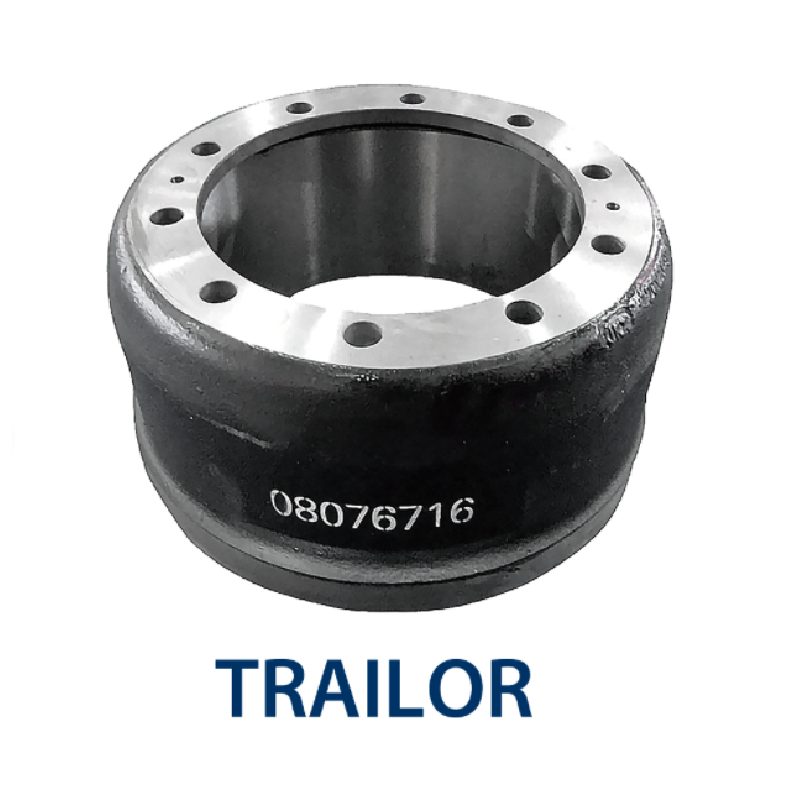Sep . 05, 2024 19:59 Back to list
Glazed Brake Drums - Understanding Causes and Solutions
Understanding Glazed Brake Drums Causes, Consequences, and Solutions
Brake drums play a pivotal role in the braking system of many vehicles, especially older models and light trucks. They work by using friction provided by brake shoes to slow down or stop the vehicle. However, a common issue that can arise with brake drums is glazing, which can significantly impact the vehicle's braking performance and safety. This article delves into the causes of glazed brake drums, their consequences, and potential solutions to address the problem.
What is Glazing?
Glazing refers to a smooth, shiny surface that forms on brake drums and shoes when they become overheated. This phenomenon occurs when the temperatures reach excessive levels, typically due to prolonged braking, aggressive driving, or improper installation of components. When the brake shoes and drums experience such high temperatures, the friction material can harden and metallize, resulting in decreased friction performance. This not only diminishes the effectiveness of the brakes but can also lead to premature wear of the braking components.
Causes of Glazed Brake Drums
Several factors can contribute to the glazing of brake drums
1. Overheating Continuous heavy braking, as experienced in mountainous terrains or during towing, can lead to excessive heat buildup.
2. Poor Brake Adjustment Improperly adjusted brakes can cause the shoes to drag against the drum, generating unnecessary heat.
3. Brake Material Quality Low-quality brake linings may not dissipate heat effectively, increasing the likelihood of glazing.
4. Brake Installs Incorrect installation can lead to misalignment, which in turn causes uneven wear and overheating.
5. Driving Habits Aggressive driving, such as frequent hard braking, can accelerate the glazing process.
Consequences of Glazed Brake Drums
glazed brake drums

The presence of glazed brake drums can have severe implications for vehicle performance and safety
1. Reduced Braking Efficiency The shiny surface of glazed drums results in less friction, making it harder for the vehicle to stop effectively. This increased stopping distance can pose serious safety risks.
2. Vibration and Noise Glazed surfaces often lead to vibrations during braking, accompanied by a squeaking or grinding noise, which can be disturbing and indicative of a braking issue.
3. Increased Wear When glazed drums and shoes are used together, it can lead to accelerated wear, necessitating earlier replacement of components.
4. Potential Brake Failure In extreme cases, prolonged use of glazed brakes can lead to complete brake failure, a dangerous situation for any driver.
Solutions for Glazed Brake Drums
Addressing glazed brake drums typically involves a few key steps
1. Inspection Regularly inspecting brake components can help identify glazing before it becomes a significant issue.
2. Resurfacing In many cases, resurfacing the drum can restore the proper friction surface and enhance braking effectiveness.
3. Replacement If the glazing is severe, replacing the brake drums and shoes may be necessary to ensure optimal performance.
4. Proper Brake Maintenance Ensuring that brakes are properly adjusted, using high-quality materials, and adopting sound driving habits can help prevent glazing.
In conclusion, glazed brake drums are a serious concern for vehicle safety and performance. By understanding the causes and consequences, drivers can take proactive measures to maintain their brake systems and ensure safe driving conditions. Regular inspection, timely maintenance, and informed driving habits can go a long way in preventing the issues associated with glazed brake drums.
-
HINO Industrial Solutions - ¡Ң���ຽ��е��������˾ | Advanced Technology&Reliability
NewsJul.13,2025
-
HINO Industrial Efficiency-Jiangsu Hino Industrial|Productivity Optimization&Cost Reduction
NewsJul.12,2025
-
HINO-¡Ң���ຽ��е��������˾|Advanced Industrial Solutions&Energy Efficiency
NewsJul.12,2025
-
Premium Brake Drum Iveco – Durable Drum Brake Drum & Brake Shoe Solutions
NewsJul.08,2025
-
High-Performance Brake Drum Liza for Enhanced Safety Reliable Drum Brake Drum & Brake Shoe Solutions
NewsJul.08,2025
-
High-Quality Brake Drum MAZ – Durable Drum Brake Drum & Brake Drum and Brake Shoe for Optimal Performance
NewsJul.07,2025
